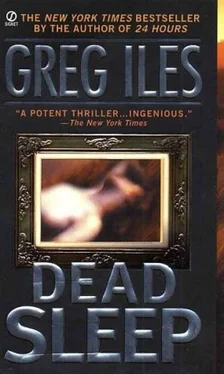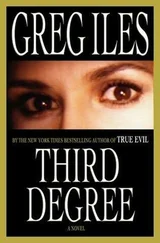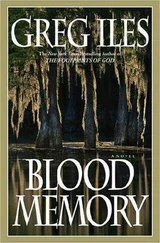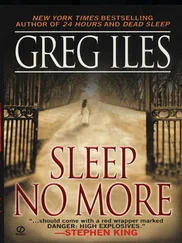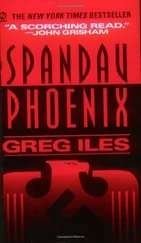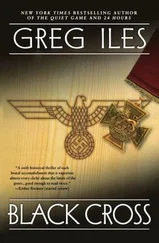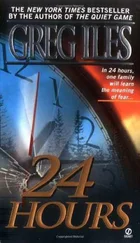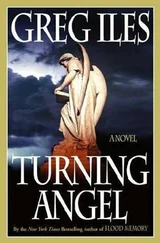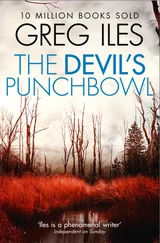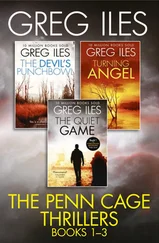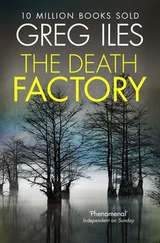The car stops, the back door opens, and John gets out. He walks to me, his eyes filled with concern.
“What do you want to do?” he asks softly. “Whatever you say, I’ll make it happen.”
“I want to walk.”
“You want company?”
“No.”
“You feel that Wheaton and Smith are both innocent, don’t you?”
“Yes.”
“Okay. I’m going to go back to the office and study the aerial photos of the courtyards. Call if you want to talk. Wendy has a cell phone.”
I’m going to have company after all.
John squeezes my forearm, then motions to Wendy, who gets out wearing her usual Liz Claiborne skirt and jacket combo, the jacket there to hide her pistol. I resist the urge to say something smart; she’s only doing her job as best she can. She falls into step a couple of yards behind me, and the sedan pulls forward and then passes us. As it recedes, I see John looking back at me over the rear seat, his eyes unreadable.
As I walk along the oak-shaded sidewalk of Esplanade, Agent Wendy trailing a few yards behind, my mind swirls with images I have no desire to ponder, and my stomach rolls with the low-level nausea I’ve felt since Dr. Lenz badgered Roger Wheaton into telling us his disease rendered him impotent years ago. Frank Smith’s revelation of Wheaton’s plea for euthanasia only made it worse. The impact of my shoes against the sidewalk offers a metronomic distraction from those thoughts, so I focus my mind on that.
From Esplanade I turn onto Royal Street, which farther on becomes the center of the antique trade in the Quarter, but here on the downriver end it’s a peaceful lane of homes and shuttered warehouses. I spent a good deal of time walking this grid of streets when I moved here at seventeen, getting to know a world at once seamier and more exotic than the provincial one I left in north Mississippi. Two decades later the sights, smells, and sounds are the same. Ornate wrought-iron balconies laden with ferns and flags climb the faces of pastel buildings, not so bright as those in the Caribbean, but festive in their stately way; the aromas of baking bread and simmering gumbo drift from the direction of St. Philip Street; and shouted cries of the urban New Orleans patois collide with rapid precise French spoken by tourists standing on the corner of Ursulines.
Just three blocks to my left, beyond Decatur Street and the levee, rolls the Mississippi River, where great ships bob higher than the roofs of the buildings. I feel myself drawn toward it, but since the water is blocked by the wharf at the end of Ursulines, I stay on Royal, walking at a native’s clip. My inner ear confirms what I have long known, that I am below sea level, walking in a world that exists only provisionally, that a hurricane making landfall here would spill the lake and the river into the Quarter like a great bowl and cover everything from the Lucky Dog men to the tourist traps of Bourbon Street, leaving only cathedral spires, Andy Jackson on his horse, and screeching gulls circling the electrical towers.
At St. Philip I break left, making for the river. Wendy’s flats go staccato as she moves to keep pace with me. The sound of a slide guitar jangles from the doorway of the Babylon Club, and with every step the Quarter grows more commercial. There are restaurants and pubs now, lawyers’ offices, small hotels. Yet still the odd doorway leads down a tunnel that opens onto a secluded courtyard, beckoning with the promise of midnight trysts and masked soirees. I shudder in sudden awareness that the Sleeping Women may have been painted in one of these courtyards. How strange to know that last night, while the people down here drank and laughed and loved and slept, government planes crisscrossed the sky above, shooting thermal images of the buildings, searching for a garden private enough in which to paint a dead woman without interruption.
Joan of Arc awaits me at the Place de France, a little concrete island in the traffic. She sits high on a golden horse, holding a golden flag against the gray clouds, an imperfect monument to a woman who overstepped what those in power saw as her place; an honest monument would show her burning at the stake. Wendy moves alongside me here, for suddenly we are awash in a sea of humanity, surging waves of tourists and cars and French Market merchants hawking vegetables, coffee, and strange souvenirs. I can smell the river now, a muddy, fetid scent on the cool air. Slipping between two fat cream-colored columns, I trot up some flagstone steps, and then I’m looking over a narrow parking lot at the levee and the booms of a freighter whose red-painted waterline floats at the level of my eyes.
“Where are we going?” asks Wendy.
“The river. There’s a walkway on the levee, across the streetcar tracks.”
“I know. The Moonwalk.”
She stays at my shoulder as I march to the little streetcar stop at Dumaine, then cross over the tracks and climb to the brick walkway atop the levee. The river is wide here, and the water high for this time of year, a gray-brown flood separating New Orleans from Algiers. Pushboats and tugs churn across the water at surprising speed, gulls dipping and diving around them. We walk toward Jackson Square, and in the distance I see the hotels and department stores of Canal Place, the old Trade Mart building, the Aquarium of the Americas, and the twin bridges arching across to the west bank.
We’re not alone on the walkway. There are tourists with cameras, joggers wearing headphones, buskers with open guitar cases full of change, and restless bums trying to catch the eyes of passersby, searching for likely marks. As we approach and pass each, I feel Wendy tense beside me, then slowly relax.
Below us on the right lie the streetcar tracks and the parking lot that runs the length of the Quarter; to our left the levee slopes twenty-five feet toward the water, an earthen wall lined with riprap, the heavy gray rocks the Corps of Engineers uses for erosion control. Driftwood clogs the riprap at water’s edge, and every forty yards or so stands a fisherman with a cane pole or rod, hoping for a catfish or a gar.
“Wendy, do you remember the big scandal about FBI lab people giving false evidence testimony? Dummying up results to give prosecutors what they needed?”
“Yes,” she says in an inquisitive tone.
“Wasn’t it proved that a lot of the Bureau’s high-tech forensic tests weren’t half as accurate as claimed?”
“In some cases. But Louis Freeh made it a priority to correct all that. You’re thinking about the sable brush hairs?”
“I’m wondering if the four people we’ve been badgering are tied to this case in any way at all.”
“The lab wasn’t aiming for some known result in this case, Jordan. They just came up with a rare type and lot of brush hair, and one of the few places that lot went was New Orleans.”
Her answer is solid, and that reassures me a little. I can hear myself breathing harder from exertion, but Wendy speaks as though we’re sitting across from each other at lunch.
“I’ve never worked a murder case,” she says. “But I have total faith in John and Mr. Baxter.”
I nod, but my faith is far from complete. Down at water’s edge, a huge bearded man in an overcoat looks up the rocky slope as we walk past. He’s far enough away that Wendy doesn’t tense, but I sense that she could have her gun out in a second or less.
“What was Thalia Laveau like?” she asks.
“Really nice. She had a tough childhood. Her father and cousin sexually abused her.”
“Yuck.”
“Mm-hmm.”
“She was gay?”
“She still is, I hope.”
“God, yes.” Wendy’s face colors. “I didn’t mean that to sound like it did.”
“It’s okay.”
Читать дальше
Конец ознакомительного отрывка
Купить книгу
